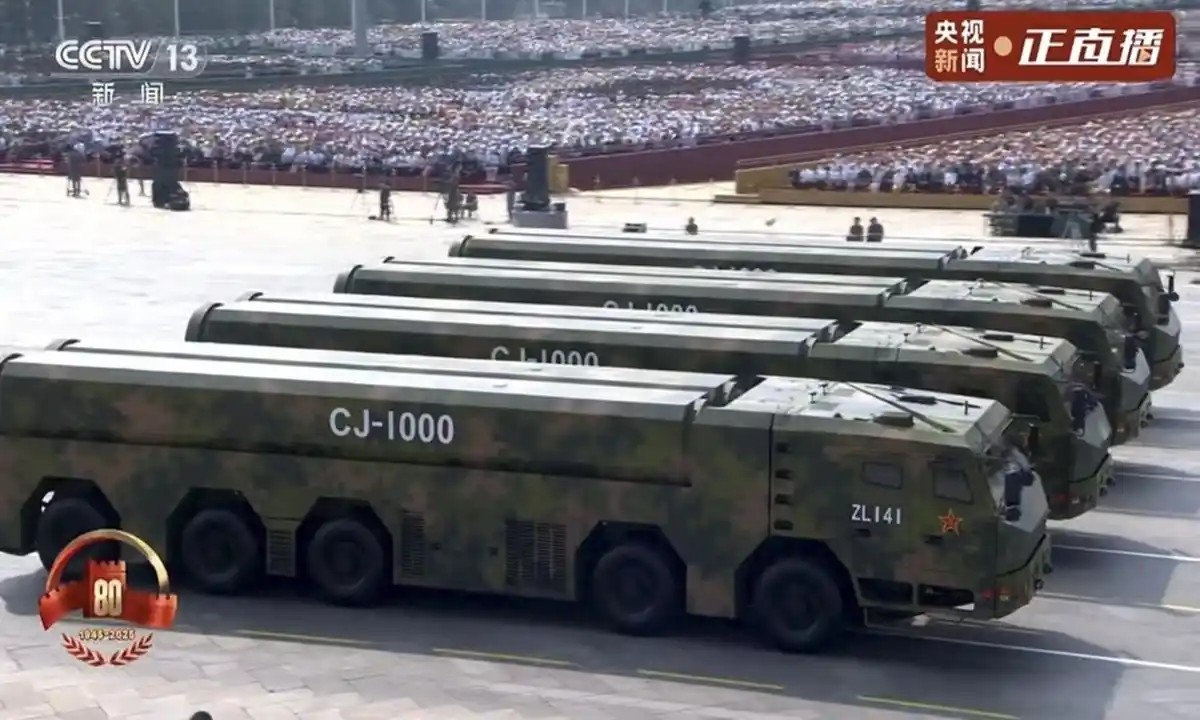Changjian-1000
A new generation of scramjet-powered hypersonic cruise missile unveiled by China's PLA Rocket Force, representing a significant leap in long-range precision strike capabilities.

"The debut of the CJ-1000 cruise missile...further enriched the spectrum of cruise missiles in China."
- Global Times, September 2025
Type
Hypersonic Cruise Missile
Service Arm
PLA Rocket Force
Status
Operational, Publicly Revealed
Debut Date
September 3, 2025
Technical Profile
The CJ-1000 integrates several advanced technologies to achieve its hypersonic capabilities. While official specifications are classified, analysis from its public debut provides insight into its design and performance goals. Explore the tabs below for details on its key technical attributes. Note that performance figures are estimates based on open-source intelligence.
Scramjet Power & Hypersonic Flight
The CJ-1000 is reportedly China's first operational scramjet-powered missile. Unlike traditional rockets that carry their own oxygen, a scramjet (supersonic-combustion ramjet) is an air-breathing engine that scoops oxygen from the atmosphere.
This allows it to fly at sustained hypersonic speeds—greater than Mach 5—within the atmosphere, combining the speed of a ballistic missile with the maneuverability of a cruise missile.
Estimated Speed:
Mach 6+
*Based on unverified analyst reports.
Subsonic (< Mach 1)
Conventional cruise missiles (e.g., Tomahawk). Slower, but fuel-efficient and terrain-hugging.
Supersonic (Mach 1-5)
Faster missiles (e.g., BrahMos). Harder to intercept, shorter reaction time for defenses.
Hypersonic (> Mach 5)
Extreme speed plus maneuverability challenges most modern air defense systems, drastically reducing interception windows.
Strategic Analysis
The introduction of the CJ-1000 is more than a technological upgrade; it signals a strategic shift. Its capabilities are designed to counter modern defense networks and project power over vast distances, altering the security landscape in the Indo-Pacific and beyond. The following points highlight its primary strategic implications.
Challenge to Modern Air Defenses
The combination of hypersonic speed (> Mach 5) and atmospheric maneuverability makes the CJ-1000 exceptionally difficult for conventional missile defense systems to track and intercept. It reduces defender reaction times from minutes to seconds, potentially bypassing even advanced layered defenses.
Enhanced Anti-Access/Area Denial (A2/AD)
With a speculative range of up to 6,000 km, the CJ-1000 significantly expands China's A2/AD bubble. It can threaten critical military assets, such as carrier strike groups and forward operating bases, deep within an adversary's territory, complicating intervention in regional conflicts.
Prompt Global Strike Potential
While likely armed with a conventional warhead, the CJ-1000's speed and reach give China a non-nuclear capability for prompt strategic strikes. This allows for rapid engagement of high-value, time-sensitive targets without crossing the nuclear threshold.
Result of Long-Term Strategy
The missile is not a surprise development but the outcome of a deliberate, long-term military modernization strategy. A 2023 RAND study noted China's focus on funding advanced systems like hypersonics, indicating this weapon is a product of years of focused investment and research.